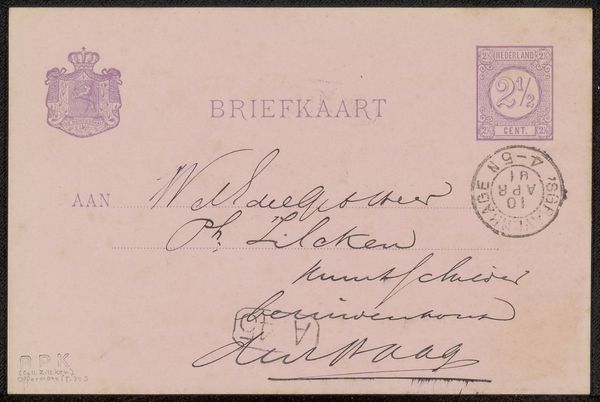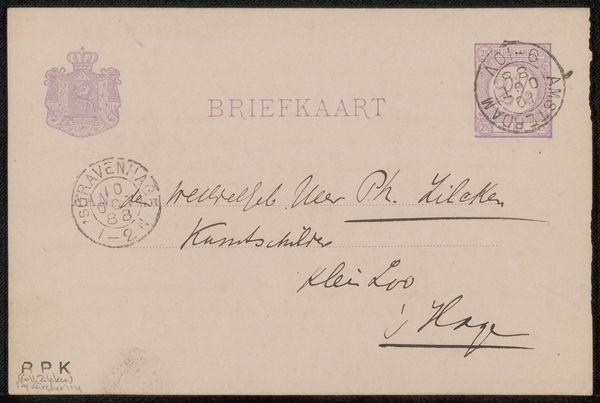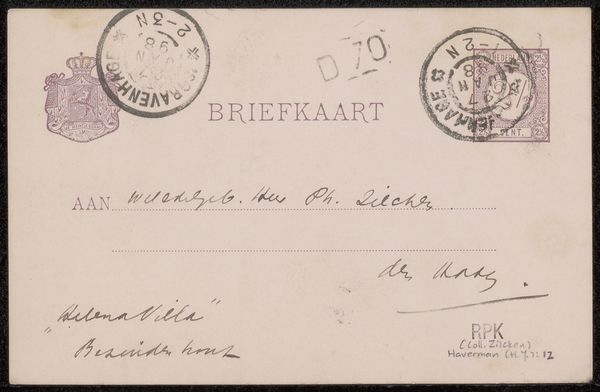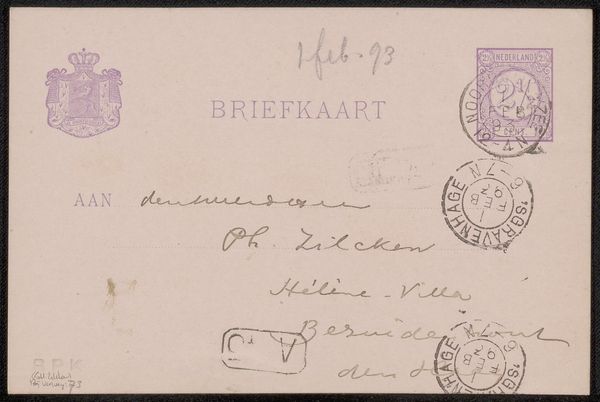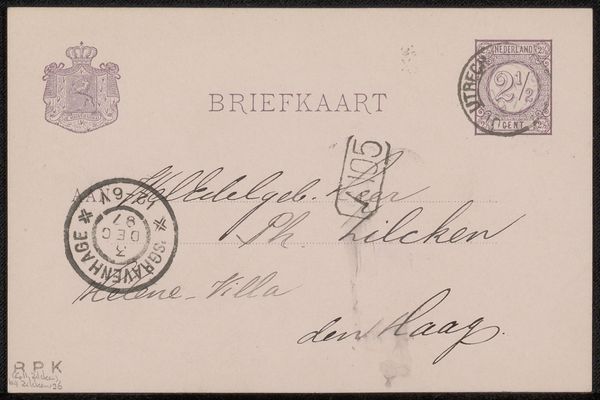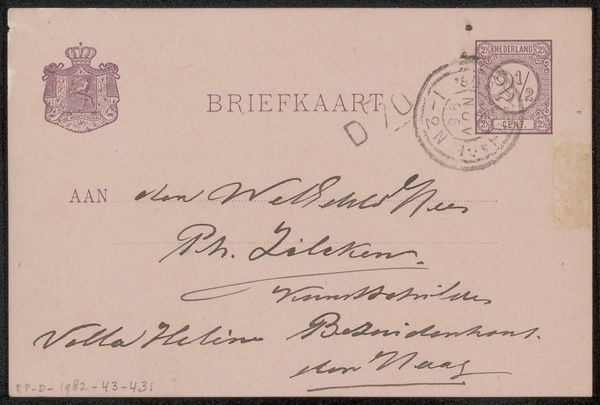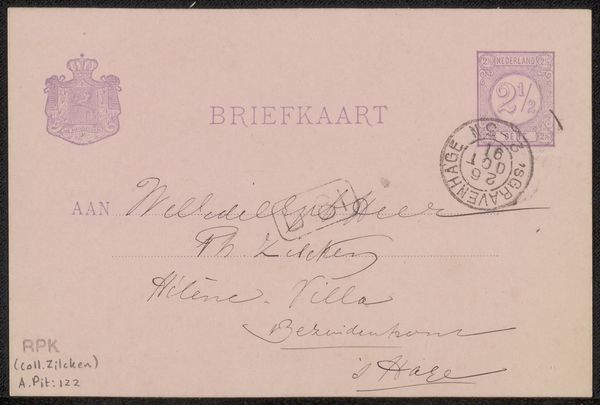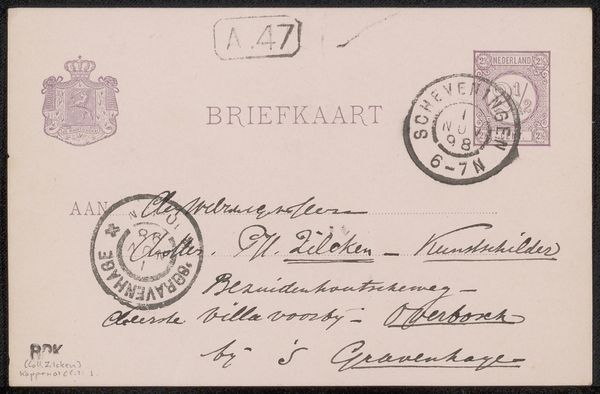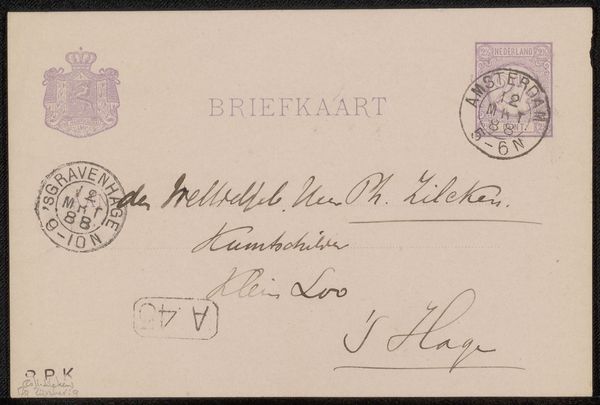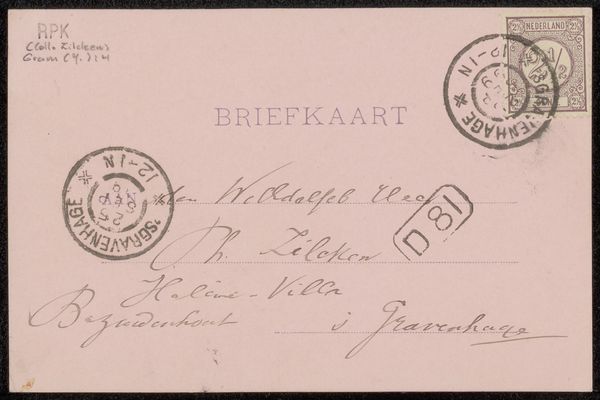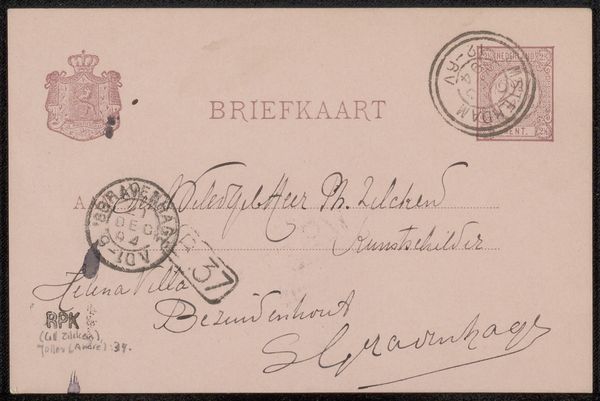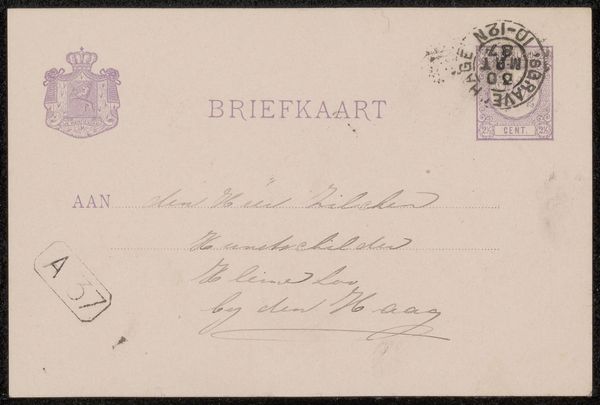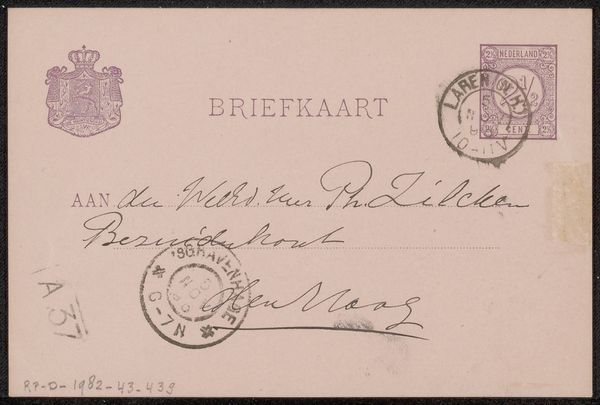
drawing, ink, pen
#
drawing
#
ink drawing
#
pen drawing
#
ink
#
pen
#
post-impressionism
Copyright: Rijks Museum: Open Domain
Editor: Here we have Hendrik Johannes Haverman’s “Briefkaart aan Philip Zilcken,” made before 1899, utilizing pen and ink on paper. The delicate line work, barely there in some places, creates this feeling of intimacy and immediacy, as if we're looking at something not meant to be seen. What do you make of it? Curator: Well, it's not just an intimate snapshot, it's also a document of production, right? Think about the materiality: the pen, the ink, the paper stock intended for mass communication. The labor is literally on display, from Haverman’s hand forming the script to the postal worker’s hand stamping the card. How does viewing this shift your understanding of the content? Editor: That's interesting! So it's not just the personal message but also all the hands involved in getting that message across? It almost flattens the hierarchy between artist and postal worker. Curator: Precisely. Consider the social context – the rise of postal services enabling this kind of communication across distances. The ‘Briefkaart’ itself represents a form of commodified communication, mass-produced and accessible, connecting people through systems of labor and exchange. This contrasts with more traditional, bespoke forms of artistic exchange. Editor: I hadn't thought of it that way. So, it’s almost commenting on the democratization of art, and also the potential alienation of the artist's hand within these new, industrialized systems? Curator: Yes, questioning where 'art' begins and the labor of communication ends is vital here. Editor: So much to consider from just a simple postcard! Thanks for helping me to see it in a completely new light. Curator: My pleasure! The beauty of art is in uncovering these layers of process and meaning within the most seemingly mundane objects.
Comments
No comments
Be the first to comment and join the conversation on the ultimate creative platform.
